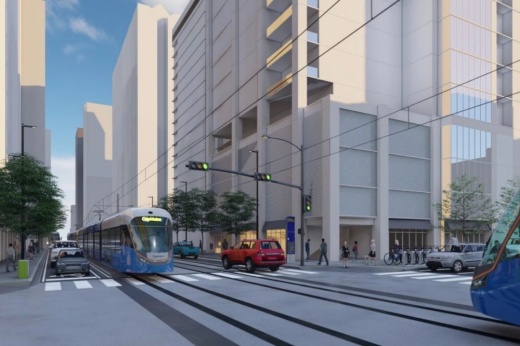What happened
The early June City Council and CapMetro votes come after the rail plan's May 24 approval by board members of the Austin Transit Partnership, the entity created in 2020 to manage Project Connect. Officials with all three entities will next hold a partnership meeting June 6 to go over the plan together as it moves into its design phase ahead of upcoming federal reviews and years of construction.
“The approval of the Austin light rail implementation plan is a huge step toward getting us to the day when we can start building," Mayor Kirk Watson said June 1.
The version of Project Connect rail local leaders are now accepting is scaled back from the blueprint presented to Austinites in 2020 with fewer stations, miles less track, only one lake crossing and no downtown subway. It will cover about 10 miles at street level and include 15 stations between 38th Street to the north, Yellow Jacket Lane to the east, and Oltorf Street to the south.
The initial investment is expected to cost between $4.5 billion and $4.8 billion sourced from local tax collections and anticipated federal funding.
If more funds become available, rail lines could stretch farther north to the Crestview area or farther east to the airport—destinations planners have labeled as priorities. Future phases could see extensions even further north and south.
What they're saying
Austin leaders broadly supported adopting the plan, stating that while rail's arrival is years too late, it can still impact the quality of life for residents and workers along its route.
“True mass transit that is fast, frequent and reliable will unlock so many opportunities for our city," Council Member Zo Qadri said. "It will increase mobility, accessibility, safety and affordability, and it will help us reduce our carbon footprint. It will drive equitable transit-oriented development that will allow more people of all income levels to live in the heart of Austin.”
With the current focus squarely on light rail, West Austin Council Member Alison Alter also said it's important to consider how Project Connect could end up changing transportation for areas that won't be served by dedicated rail lines as more of its pieces come online.
"I’m looking forward to the continued conversations that we’ll have about the bus system, the bus rapids, the park-and-rides, the flyer down [FM] 2222 that will really help us rethink the broader transit system now that we know what the light rail plan is," she said.
While sharing some skepticism about the new plan and likely challenges with running rail on-street, CapMetro Board Member Matt Harriss also highlighted that the outline's approval comes as other aspects of Project Connect are moving forward as well.
“Unfortunately I think sometimes the light rail tends to dominate the Project Connect discussion, both pro and con, and as a result we kind of forget it includes bus rapid transit and other elements that are really going to push the system out to where our customer base is going to be," he said.
CapMetro Board Chair Jeff Travillion also commended ongoing upgrades for transit connectivity on the east side, and the overall work of planners so far as the rail system comes together.
“It is a daunting task, and we’ve got a number of professionals that are up to that task. And as we build a culture of cooperation and transparency, hopefully what we will see is a community continuing to embrace and wanting more," he said ahead of the June 2 CapMetro vote.
Diving deeper
The finalized Project Connect plans are moving ahead soon after dodging state-level attempts this spring to stall or cancel its implementation.
As originally drafted, legislation from former council member and current state Rep. Ellen Troxclair, R-Austin, likely would have forced a new election over Project Connect's financing system approved by Austin voters in 2020—an outcome Watson had prepared to accept despite opposition to the measure.
Later Senate edits to Troxclair's House Bill 3899 could have blocked the ATP from using Project Connect tax collections at all, therefore halting Project Connect. But the bill did not make it through a final vote before the legislative deadline in May.
Still, lawmakers' scrutiny of Austin's transit system ended up producing additional guidance that could lead to some adjustments. After state Sen. Paul Bettencourt, R-Houston, requested reviews of the plan alongside HB 3899's consideration, now-suspended Attorney General Ken Paxton issued a technical legal opinion finding that Project Connect's financing system doesn't line up with state rules.
The resolution Austin council members approved June 1 was drafted by Watson and includes language directing interim City Manager Jesús Garza to evaluate several of Project Connect's foundational documents to ensure they comply with the Texas tax code and constitution. Garza will also propose any changes to Project Connect's structure to ensure the ATP can usher Project Connect forward as intended.
In a May newsletter, Watson said Paxton's opinion ended up helping to inform the city's next steps and give Austin mass transit a clearer path forward.
"We could see new legislative challenges. We could also see litigation from those who lost the 2020 election and ran to the Legislature to undermine the will of the voters ... but for now we’re going to continue our efforts and look forward to the day when light rail is up and running in Austin," he wrote.





